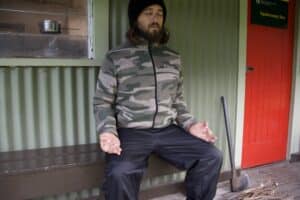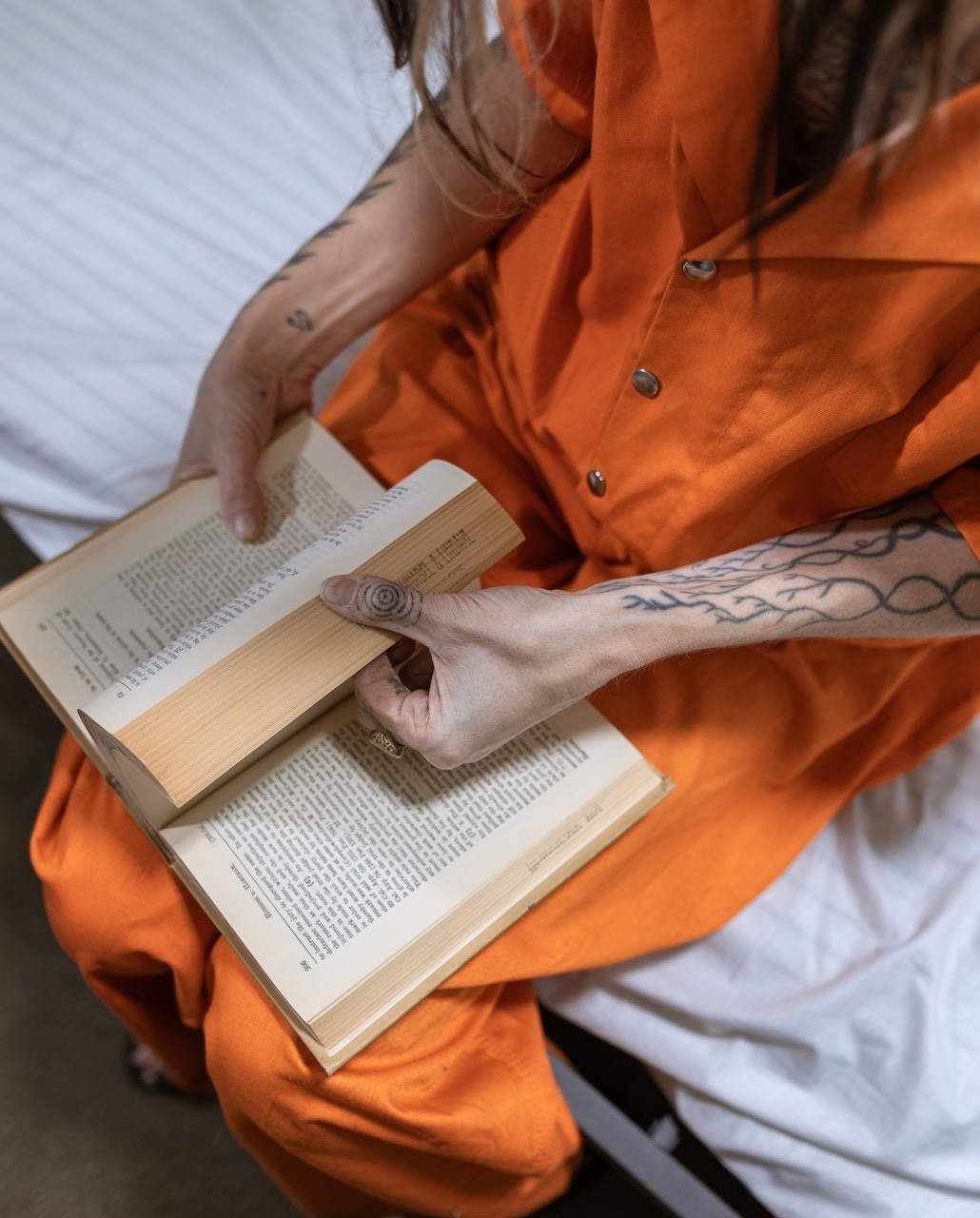Without knowing hardly anything about Buddhism, Todd Perelmuter decided to jump in with both feet by going to live at a Buddhist monastery as a monk in the Himalayan mountains in India.
After months of living in complete silence, without technology or a phone, and even without books except for Buddhist texts, Todd discovered a wisdom and philosophy that would totally change his life as it had for countless Buddhists for more than two and a half millennia.
In this podcast, you’ll learn about this time-tested, age-old, life-changing philosophy as Todd recounts his story there. As a Buddhist monk told Todd during his time there, “Buddhism is not a religion, it is a way of life.” No matter what you believe, or don’t believe, their psychological and spiritual techniques can surely help anyone get through anything.
***If you prefer reading to listening, here’s the transcript of this podcast***
Visit to a Himalayan Monastery
I’m going to tell you about the time I visited a Buddhist monastery in Dharamsala, India, which is the home of the Tibetan people in exile from Tibet. India has been very kind in letting the Tibetans have sanctuary in Dharamsala and McLeodGanj in northern India. Very few, if any, countries were willing to take in all of the Tibetan Buddhists who were forced out of their homes during the Chinese takeover of Tibet. India generously made a home for these people in the Himalayan Mountains, where the Dalai Lama lives.
They have many beautiful Buddhist monasteries. I visited one and decided to stay for a few months. I was blown away by the beauty of this place and the mountains, as well as the beauty of the Buddhist art in their temple. Thankfully, they had either an Australian or British gentleman monk who was able to teach me a lot about Buddhism.
Introduction to Buddhism
This was my introduction to Buddhism; I didn’t know anything about it. This was my grad school of Buddhism.
At the monastery, there was mostly no talking, except for in meditations, there might be someone guiding the meditation or there would be debates of Buddhist ideas, all to help their knowledge and wisdom evolve, and become refined. So they would debate Buddhist ideas. There would be some guidance, in certain meditations, and there would be group meditations.
But outside of the temple, there was no talking. Every day, we meditated for about five or six hours, different kinds, some walking meditation, some silent meditation, some guided meditation.
There were also daily Buddhist teachings, providing me with the opportunity to learn about Buddhism specifically Tibetan Buddhism. What struck me the most was the demeanor of the monks—they were among the happiest individuals I had ever encountered.
Unlike the fleeting smiles we often offer in passing, these were genuine, natural expressions of joy. It wasn’t the result of recalling a funny moment or trying to appear pleasant for someone else’s benefit. Their smiles emanated from within, reflecting a deep sense of contentment and appreciation for life itself.
Inspired by their happiness, I attempted to walk around with a smile on my face, but it felt forced, and unnatural. I couldn’t replicate the genuine joy that radiated from the monks. It’s possible others noticed my efforts, perhaps thinking I looked a bit odd. Nonetheless, I knew there was something profound about this place, something worth exploring further.
Some Unforgettable Lessons From Buddhist Monks
The teachings of this place resonated deeply with me. There was little emphasis on religion; instead, the focus was on philosophy and psychoanalysis. We delved into discussions about the nature of the mind, the root of suffering, and how to alleviate it. When we spoke of suffering, we referred to negative thoughts, feelings, and emotions.
One key concept we explored was the human tendency to crave pleasant experiences and avoid unpleasant ones. This perpetual craving and aversion are identified as the sources of much of our misery.
As the Australian monk explained, life often presents us with the first arrow of suffering, but it’s our resistance and aversion to that suffering that adds a second arrow. The key, he emphasized, is to transform that second arrow into a healing tool, akin to an acupuncture needle.
This analogy struck a chord with me, highlighting how our reactions to life’s challenges can either exacerbate our suffering or become opportunities for growth and healing. It was a profound insight that continues to shape my perspective on navigating life’s inevitable ups and downs.
The pain isn’t that bad. But we’re like mad at the table. We’re mad at ourselves for not seeing the table. That is the part of the suffering. The pain was minimal, but the suffering, we’re screaming profanities, right? How can we turn that pain into healing into a teaching moment? That is always the goal. When you can limit that second arrow to instead of being a few minutes, being mad, to a few seconds, to no time, that is when suffering ceases. You weren’t craving not to hit the table? If you hit it, there’s a moment of pain. That’s okay. Pain is a signal to the brain. Don’t try to do that. Don’t do that again.
But we’re so conditioned to seek pleasure, avoid pain, that it creates all of this unhappiness in our lives. If external circumstances aren’t right, we lose our minds.
The way out of this suffering is to understand this nature on a very deep level, and the way we understand anything, whether it’s science or anything else in our lives, understanding begins with observation. We study something, we look at it, and we look carefully.
Putting Buddhist Teachings into Practice
This is what meditation gives us: the chance to turn our attention inward and look at our mind. We notice the way it works. As we shine the light of consciousness into every region of our mind, unconscious thinking and habitually generating negative emotions stop. You don’t do something unconsciously if you’re conscious about it, and why would we consciously create suffering?
There were many incredible teachings at this monastery that are pillars of Buddhist thought and philosophy. When you learn them, and you meditate on them, you’re truly creating the ingredients for transformation. When you learn something in a classroom, you kind of understand it. But when you put it into practice, you get it.
This is why doctors don’t read a book and then go perform surgery. They have to practice; they have to learn from a teacher; they have to slowly practice on maybe a dead body first. Then, after enough practice, they become experts. But you need both experience and wisdom.
Path to Peace with Todd Perelmuter Newsletter
Buddhist Philosophy of Emptiness
Some of these wisdoms that we learned were the nature of emptiness. What they mean by that is not that nothing exists. But what they mean by that is nothing has an objective, independent meaning behind it. It is only humans in consciousness that put meaning onto something.
So one thing Buddhists might do is meditate on a chair. They’ll visualize a chair. They’ll look for where the essence of that chair is. If they remove one leg of the chair, is it still a chair? If they remove two legs, are all the legs of a chair? Or the back? Or the seat? At what point does it stop being a chair? Is there a finite moment? The answer is, it never was a chair. That is what we call this type of thing. That at no point can it lose its chairness. This is also applied in many meditations to ourselves. Where is the “I” within me?
If I lose my hair, and you’re holding my hair, is that still my hair? Does being on my body mean it’s mine? If it’s mine, where is the “me”? If I lose my arm, is that still my arm? Where does the possession of this arm belong to? Where is the “me” I’m referring to? Is it my brain?
What if part of my brain is removed? Am I now less “me”? Is that even possible? Is there some of “me” somewhere else? The more you dig down, the more you realize there is no physical “me”. That is a profound experience, to finally understand that.
That who we are has nothing to do with our physical body, which is constantly changing.
There’s not a single cell of me from my childhood self, yet we say I am that childhood self. It’s this awareness, the consciousness, that is the ultimate root of who we are. It’s not material.
There’s no physical area where consciousness comes from in the brain or the body. It is this life force energy, this non-material mind which can perceive, in which all our senses are perceived by. It is a timeless, eternal, unchanging consciousness, like space. Space can never be destroyed, space can never be burned or frozen. It always is and all matter can exist within it.
This is the nature of emptiness, the nature of our mind: constructing a story, projecting meaning, and that no object has any meaning except what we put onto it. This opens us up to the potential to completely create the meaning we choose in our lives, to completely take hold and charge of how we experience the world.
We can be angry and bitter. Or we can be grateful, humble, joyous, and loving, no matter what external situations are happening. We are the writers of our own story.
After another few months of living at this monastery, with these wonderful monks who took me in and allowed me to live with them and live as a monk in this beautiful monastery, I felt it was time to move on. I had a good handle on Buddhism, and I appreciated everything they taught me.
I told this monk that my plan was to travel the world and learn from every spirituality and religion I could. He gave me his blessing and told me, “My father used to say that everyone knows something, but nobody knows everything.”
I was just so grateful for his blessing. So I left the monastery and continued my travels through India and Asia.



